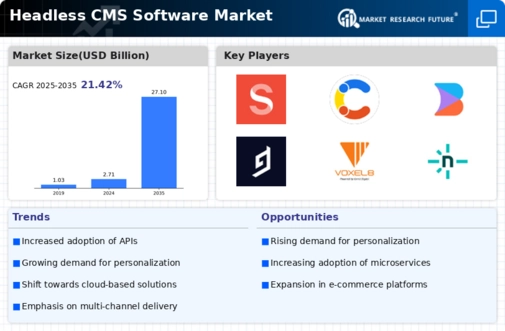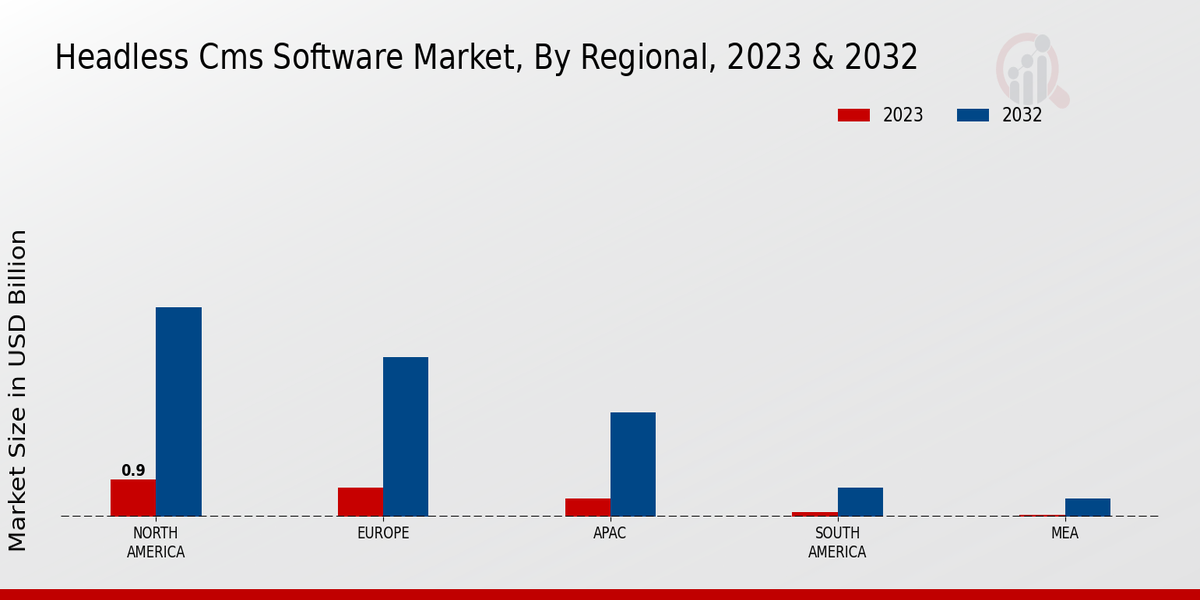Increased Focus on Digital Transformation
Digital transformation initiatives are propelling the Global Headless CMS Software Market Industry forward. Organizations are prioritizing the modernization of their digital infrastructure to enhance operational efficiency and improve customer engagement. Headless CMS solutions facilitate this transformation by enabling businesses to rapidly deploy and manage content across diverse channels. The anticipated growth of the market to 27.1 USD Billion by 2035 underscores the critical role that headless CMS plays in supporting organizations' digital strategies. This growth is indicative of a broader shift towards agile and responsive content management practices.
Rising Demand for Omnichannel Experiences
The Global Headless CMS Software Market Industry experiences a surge in demand for omnichannel experiences as businesses seek to engage customers across multiple platforms. This trend is driven by the need for seamless content delivery and personalized user experiences. Companies are increasingly adopting headless CMS solutions to decouple content management from presentation, allowing for greater flexibility in content distribution. As a result, the market is projected to reach 2.71 USD Billion in 2024, reflecting a growing recognition of the importance of delivering consistent and engaging content across various touchpoints.
Growing Adoption of API-First Architectures
The Global Headless CMS Software Market Industry is witnessing a growing adoption of API-first architectures, which allow for seamless integration with various applications and services. This trend is particularly relevant as organizations seek to enhance their digital ecosystems and improve interoperability. By leveraging headless CMS solutions, businesses can create tailored content experiences that meet specific user needs. The projected CAGR of 23.26% from 2025 to 2035 highlights the increasing reliance on API-driven content management systems, as companies recognize the value of flexibility and scalability in their content strategies.
Enhanced User Experience and Personalization
The Global Headless CMS Software Market Industry is increasingly focused on enhancing user experience and personalization. As consumers demand more tailored content experiences, businesses are turning to headless CMS solutions to deliver relevant and engaging content. These platforms allow for dynamic content delivery based on user preferences and behaviors, fostering deeper connections with audiences. The market's growth to 27.1 USD Billion by 2035 suggests that organizations are prioritizing user-centric strategies, recognizing that personalized content is essential for driving customer loyalty and satisfaction.
Emergence of E-commerce and Content-Driven Strategies
The rise of e-commerce and content-driven strategies is significantly influencing the Global Headless CMS Software Market Industry. As businesses pivot towards online sales and digital marketing, the need for robust content management solutions becomes paramount. Headless CMS platforms enable organizations to create, manage, and distribute content efficiently, enhancing their ability to engage customers and drive conversions. This shift is reflected in the market's growth trajectory, with expectations of reaching 2.71 USD Billion in 2024, as companies increasingly recognize the importance of integrating content and commerce.























Leave a Comment